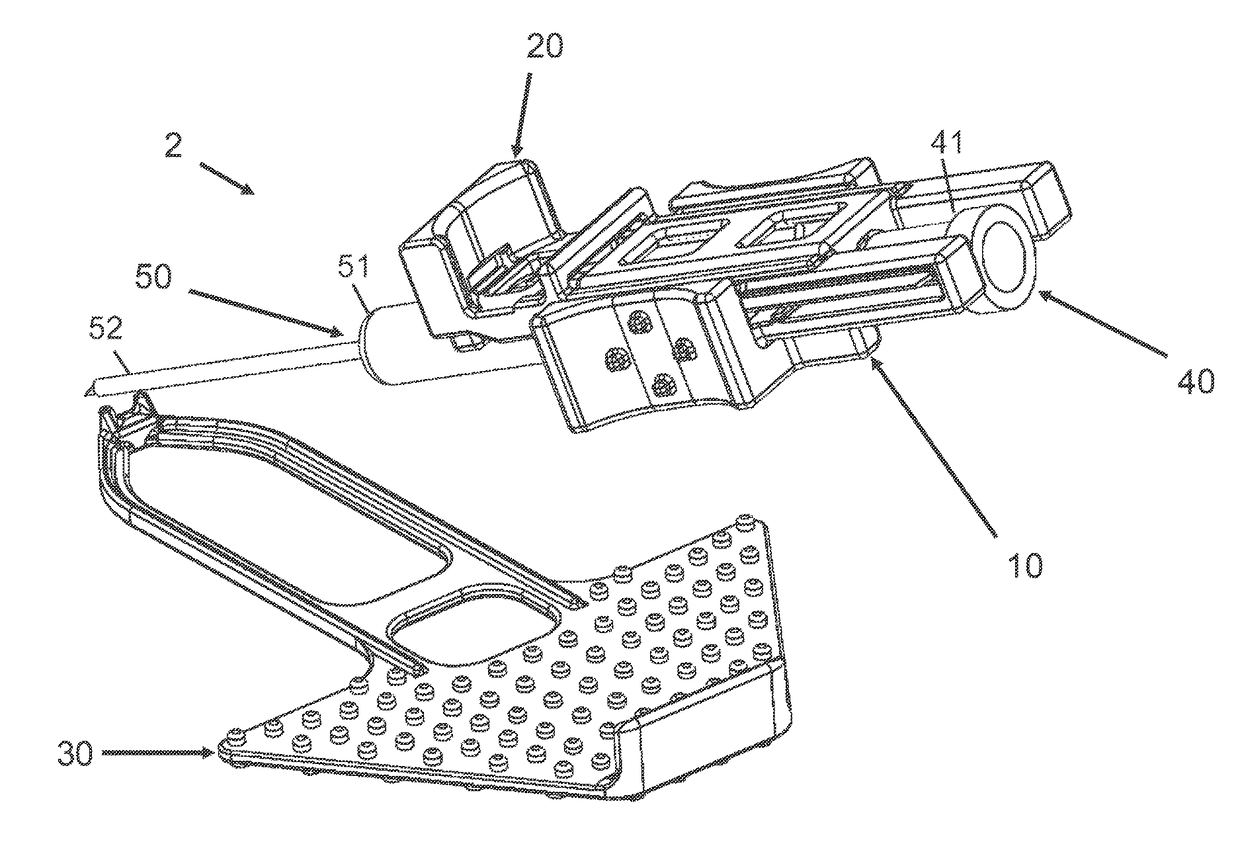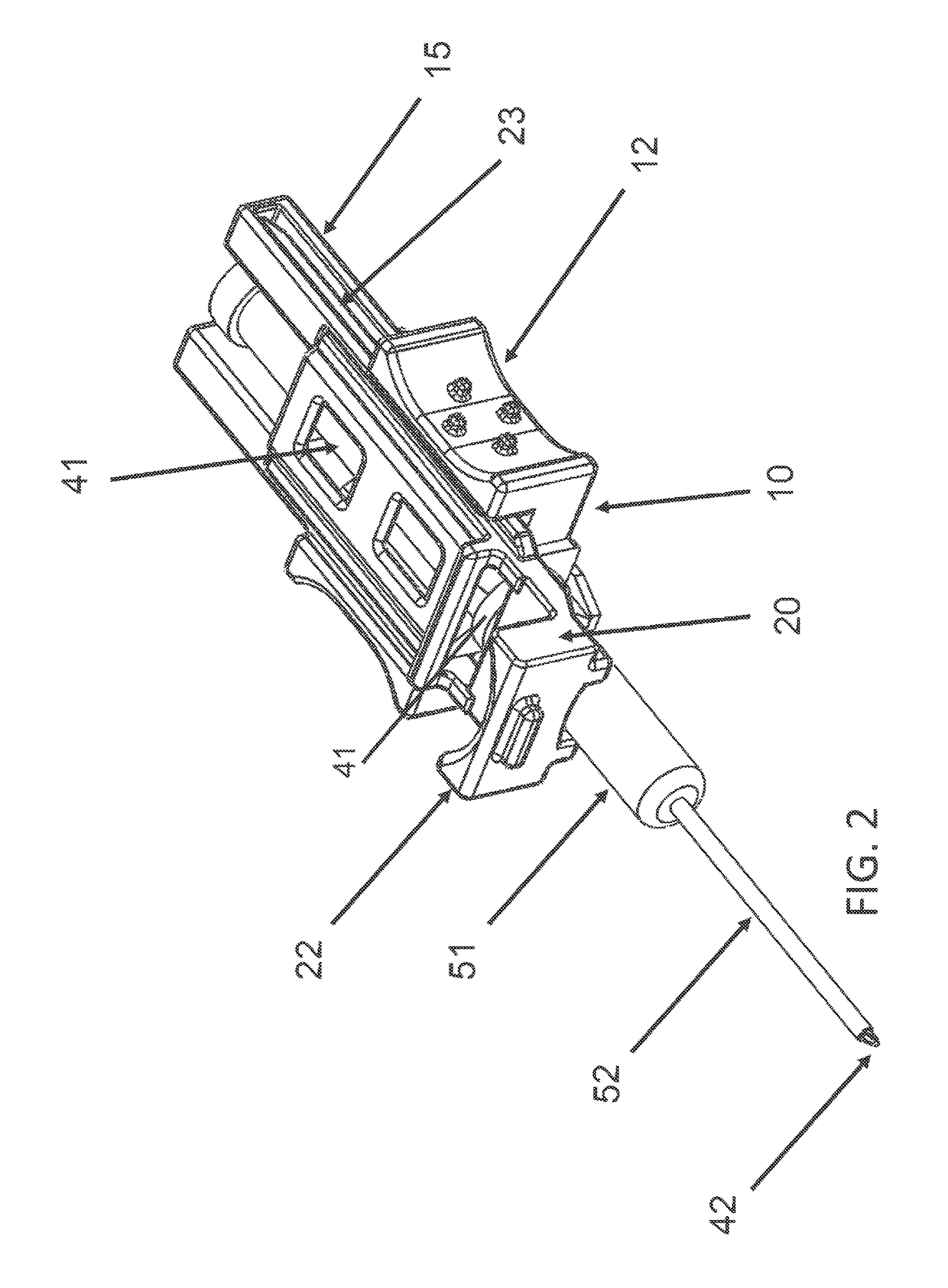Intravenous access assist device
- Summary
- Abstract
- Description
- Claims
- Application Information
AI Technical Summary
Benefits of technology
Problems solved by technology
Method used
Image
Examples
Embodiment Construction
[0030]The present invention is an IV placement assist device for assisting in the manual placement of an IV catheter without interrupting the flow of the IV start procedure.
[0031]With reference to FIG. 1, the IV placement assist device 2 generally comprises a base 10, a catheter advancer 20, and a stabilizer 30. Given a conventional needle 40 carrying a deployable catheter 50, the base 10 securely engages needle 40 at its hub 41 and the catheter advancer 20 lightly engages catheter 50 at its hub 51. An alternate top perspective view without stabilizer 30 is shown in FIG. 2 when the catheter advancer 20 is in its starting position (not yet advanced). Here the catheter hub 51 is still in contact with the needle hub 41 and the needle tip 42 is visibly extending through the distal tip of catheter sleeve 52. FIG. 3 shows the same assembly of FIG. 2 when the catheter 50 has been advanced somewhat and a section of the needle shaft 43 is visible proximal to advanced catheter hub 51 through ...
PUM
 Login to View More
Login to View More Abstract
Description
Claims
Application Information
 Login to View More
Login to View More - R&D
- Intellectual Property
- Life Sciences
- Materials
- Tech Scout
- Unparalleled Data Quality
- Higher Quality Content
- 60% Fewer Hallucinations
Browse by: Latest US Patents, China's latest patents, Technical Efficacy Thesaurus, Application Domain, Technology Topic, Popular Technical Reports.
© 2025 PatSnap. All rights reserved.Legal|Privacy policy|Modern Slavery Act Transparency Statement|Sitemap|About US| Contact US: help@patsnap.com



